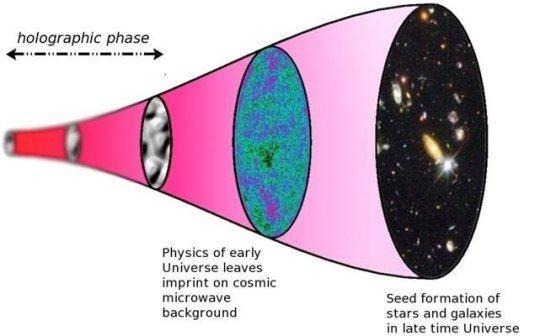Researchers Find Observational Evidence That The Universe Is A Hologram
The holographic universe notion is nothing new — it was first suggested back in the 90s — but it just gained a lot of traction thanks to a new research project helmed by researchers from Italy, the UK, and Canada. The group's study is said to present the first ever observational evidence supporting the idea that our seemingly 3D universe is in fact a really complex (and big) 2D hologram.
To explain how this complex seemingly 3D existence can actually exist within a 2D surface, the University of Southampton's Professor Kostas Skenderis likened it to the small hologram found on many credit cards. Though the image in the hologram appears to be 3D, it is fact printed and contained on the flat 2D surface of the credit card.
That's an analogy we've heard before, and perhaps the best way we can begin to wrap our minds around such an unusual possibility. The example is lacking, though, because it deals merely with the visual, whereas humans interact with objects in a 3D manner using touch, among other things — or, at least, we perceive ourselves as doing so.

Speaking further about their work, Skenderis said:
Holography is a huge leap forward in the way we think about the structure and creation of the universe. Einstein's theory of general relativity explains almost everything large scale in the universe very well, but starts to unravel when examining its origins and mechanisms at quantum level.
Scientists have been working for decades to combine Einstein's theory of gravity and quantum theory. Some believe the concept of a holographic universe has the potential to reconcile the two. I hope our research takes us another step towards this.
The evidence was found by looking into irregularities in the Big Bang's afterglow, comparing the data's 'network of features' from that afterglow to quantum field theory.
SOURCE: ScienceDaily
